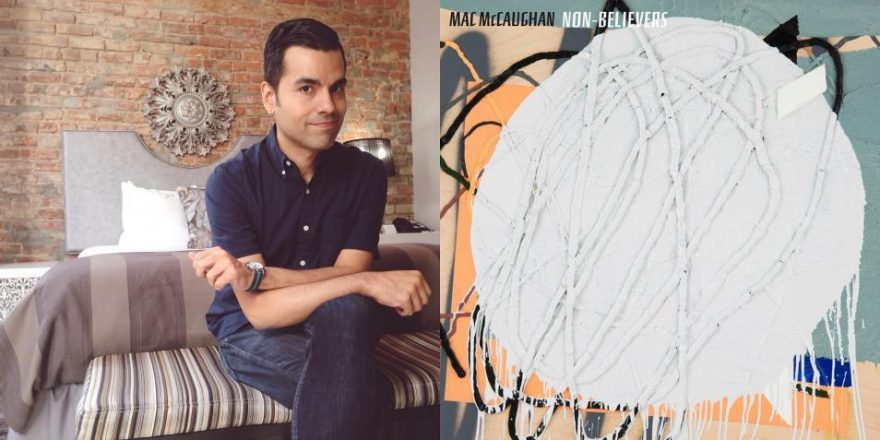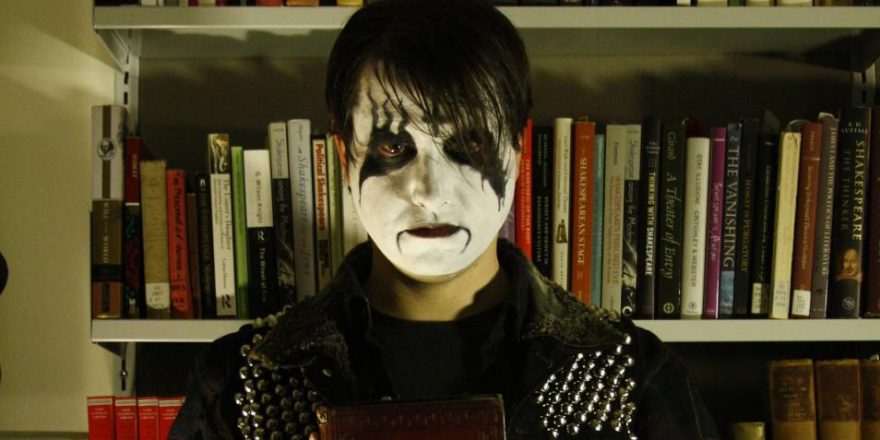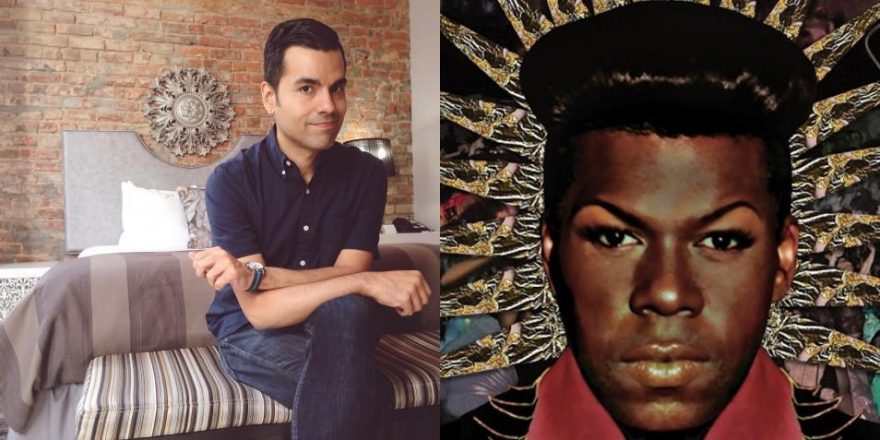Back in October, CMJ’s yearly festival in New York City hosted a relatively successful panel called “All Through a Life: Emo’s Revival.” I was asked to participate, mostly due to the fact that I once played guitar in a band that helped refine what people now call “emo’s second wave” — a term that encompasses a disparate collection of bands from hardcore punk’s third and fourth waves.
Most of these bands, I’d argue, were simply trying to find clarity and self-definition at a time when no one seemed to agree on what “hardcore” actually was anymore. We applied pressure to the idea that hardcore should be defined more by its thrash beats and mosh parts than its idealism and community-building. We debated whether or not faithfulness to the traditional hardcore music we inherited was somehow counterintuitive to its primary lyrical themes of asserting autonomy and effecting change. We strayed from the aesthetic templates set by bands like the Cro-Mags, ironically, by adhering to their message: “Do what you want/and how you want it/Feel it’s right/Go out and do it.”
Over time, cultural memory has somehow displaced emo from its hardcore history — there’s a reason they called it “emo-core” at first — but this is truly how it formed. It literally was post-hardcore.
And so, for many of these bands, this period was defined by an unrestrained curiosity: we experimented with our instruments (the Promise Ring’s insistent open-G guitar tuning), our notions of self-determination (the inevitable major-label signings of Jimmy Eat World, Mineral and my own Texas Is the Reason), and most significantly, with our subject matter (just read a Cap’n Jazz lyric sheet). Before this so-called “second wave” of emo emerged, hardcore in the ’90s had become something of an ideological baseball bat swung by everyone from militant right-wing vegans to radical left-wing socialists; it was a social, political and religious war zone, occupied by atheists and Hare Krishnas, communists and covert capitalists, gang members and gay liberationists. Emo was a reaction to that. It was an attempt to strike at something more universal and less ideologically attached.
Most of the crowd at that CMJ panel were too young to have experienced all of this firsthand, but one question from an audience member made an unexpected connection between the reactionary emo movements of 1995 and 2015: She asked the panel if we thought the current emo revival was somehow, in part, a rebellion against the explosion of electronic dance music — perhaps attempting to revive the unnecessary rock-versus-disco argument for a new generation. I offered an alternate theory.
“If there was a pushback on anything, I would pin it on disaffected, ironic indie-rock,” I told her. “I think people were over just shrugging our shoulders and pretending we didn’t feel anything.”
What’s different, perhaps, is a newfound sense of perspective that’s impossible to access when you’re waxing nostalgic in your twenties.Before there was second-wave emo, there was Superchunk. I know this because they had made one of a trifecta of albums name-checked by every second-wave emo band I knew: Seam’s The Problem with Me, Fugazi’s In on the Kill Taker and Superchunk’s On the Mouth. All three of these records came out in 1993, which is, not so coincidentally, the year before many of the second-wave emo bands formed. These albums demonstrated the possibilities of a musical life after hardcore.
In the case of Superchunk, songs like “Precision Auto” or “Mower” moved with all the angst of a band like Reagan Youth, but with none of the hardcore ego that would have prevented the sincere delivery of lines like “It was a robin’s egg and it was blue.” Other songs, like the leisurely paced “Swallow That,” were arguably proto-emo: engaging power-pop dynamics fortified with poetic imagery, foregoing breakneck tempos for bedroom introspection.
Mac McCaughan, the band’s singer and lyricist, so perfectly zeroed in on the kind of conflicted interior expression that embodied our post-hardcore confusion that his band became something of a lightning rod in second-wave emo circles. The name of the first Get Up Kids album, Four Minute Mile (1997), was lifted from a 1995 Superchunk lyric. Texas Is the Reason’s “Something to Forget” was something of a thinly veiled love letter to the band. More recently, Jimmy Eat World included a cover of “Precision Auto” as a deluxe edition bonus track on their 2010 album Invented. The fact is, we respected post-punk icons like Thurston Moore and J Mascis, but we related to McCaughan. The difference is substantive.
Listening to Non-Believers, McCaughan’s first solo album under his own name, I realize that things haven’t changed as much as they’ve evolved. From a musical standpoint, it doesn’t bare the same teeth as early Superchunk; the raw edges have long since been smoothed out. But it’s also not as tentative as his side project Portastatic, which often felt like a vessel for tinkering of some sort. Non-Believers takes ownership of McCaughan’s craftsmanlike songwriting, still managing to be playful amid the gravitas.
It begins, like so many songs in the key of emotional realism, in the past tense. In “Your Hologram,” the narrator recalls the story of an ’82 Honda having all its tapes stolen and a band getting all their hearts broken. He is seemingly recording these memories in his basement — implying, of course, that such fleeting memories are worth preserving. “Lost Again” immediately follows, painting a vivid but familiar scene of driving aimlessly through suburbia; the longing and pathos are still palpable after all these years.
What’s different, perhaps, is a newfound sense of perspective that’s impossible to have when you’re waxing nostalgic in your twenties. At 47, McCaughan is a husband and father and businessman in addition to being a songwriter, which is to say that there isn’t any room for the kind of myopic wallowing that endangers writing of this sort. The lyrical bent for a Cocteau Twins-influenced song called “Real Darkness,” for example, could have taken a drastically different direction, but McCaughan chooses instead to reel back the blues. “Smile, kid, smile,” he sings, “until you know real darkness.” Indeed, whereas Non-Believers begins in the past, in a basement, the album concludes firmly in the present with a song called “Come Upstairs.” It’s that rare album where conflict and resolution peacefully coexist.
The twentysomething post-hardcore kid in me would not have appreciated such nuance in 1994. But the 41-year-old man I’ve become gets it.
I’m not gonna lie. There’s a part of me that has always resented being saddled with the term “emo,” and part of that is because I’m still not even sure what it means. If it means that I made music that played a part in the maudlinization of human emotion, well, who would want that? But if it means that I was part of a microgenre that expressed vulnerability inside of a macrogenre that very rarely awarded vulnerability, then I’m not so sure we’ve placed the credit — or the blame, depending who you ask — on the recipients most responsible.
It’s not that Mac McCaughan, or Superchunk, for that matter, invented the emotional narrative in punk rock; we can hitch that wagon to Hüsker Dü or Rites of Spring or even the Replacements. But few songwriters can claim to have had the same influence on how these narratives developed in contemporary punk and post-hardcore, and this is largely because McCaughan didn’t just fall out of an indie-rock sky but, like us, came up from a hardcore background. He went to Sunday matinees at CBGB, just like I did. He grew up reading Maximumrocknroll and trading punk tapes, just like I did. He still loves Negative Approach, like I do. These connections are significant because they show that McCaughan shares a discursive aesthetic with second-wave emo, and whether knowingly or not, we heard our voice in his.
Which is to say that Mac McCaughan — with his uncynical and unapologetically sentimental demeanor — has always quite feasibly been second-wave emo’s missing link, and even so many years later, Non-Believers does nothing to dispute that claim. Our bands were already headed in the same direction, of course. But he was always just far enough ahead of us to light the way.








